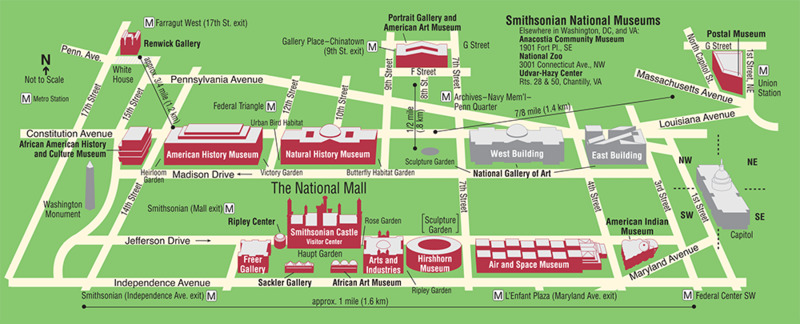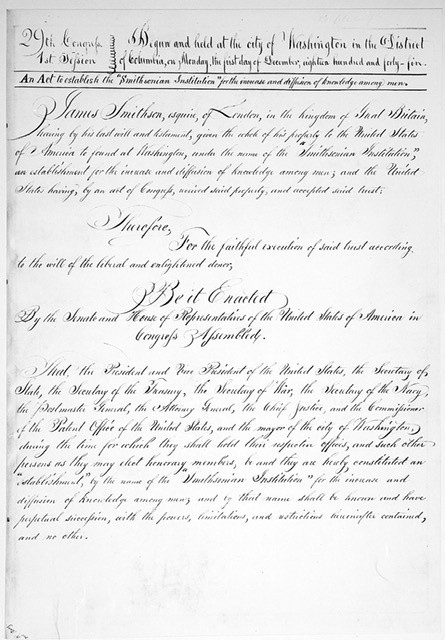How the identity and purpose of the Smithsonian Institution was shaped by the different visions of the first administrators
The Smithsonian Institute is the largest museum system in the world with nineteen museums, twenty-one libraries, nine research centers and a zoological park. It is named after James Smithson, British scientist and intellectual who bequeathed his estate to the United States to found at Washington, under the name of the Smithsonian Institution, an establishment for the increase and diffusion of knowledge among men. Because Smithson’s directive in his will was vague, there was much debate over interpretation of what it meant. When Congress finally passed the act creating the Smithsonian Institution in 1846 it provided for a "suitable building to house objects of natural history, including a geological and mineralogical cabinet; also a chemical laboratory, a library, a gallery of art, and the necessary lecture rooms (Act, siarchives).” They created a Board of Regents to oversee the administrative responsibilities, hiring the well-known leading scientist Joseph Henry as the first Secretary and Charles C. Jewett as the first librarian of the Smithsonian Institution.
In 1850 Spencer Baird was hired by Henry as Assistant Secretary and the first curator of the natural history museum. This exhibit will examine the visions and ideological differences between these three men regarding the interpretation of Smithson’s intentions, the fight over funding, and how politics ultimately shaped the direction of the Smithsonian Institution as it is today.
“In the case of the death of my said Nephew without leaving a child or children, or the death of the child or children he may have had under the age of twenty-one years or intestate, I then bequeath the whole of my property . . . to the United States of America, to found at Washington, under the name of the Smithsonian Institution, an Establishment for the increase & diffusion of knowledge among men (Ewing, 307-308)."
August 10, 1846, an Act of Congress established the Smithsonian Institution as a trust, to be administered by a Board of Regents and a Secretary of the Smithsonian. It called for: an establishment, by the name of the ‘Smithsonian Institution,’ for the increase and diffusion of knowledge among men; and a suitable person as secretary of said Institution, appropriated for the erection of suitable buildings, and for other current incidental expenses of said institution….for the reception and arrangement, upon a liberal scale, of objects of natural history, including a geological and mineralogical cabinet; also a chemical laboratory, a library, a gallery of art, and the necessary lecture rooms, all objects of art and of foreign and curious research, and all objects of natural history, plants and geological and mineralogical specimens….shall be delivered to such persons as may be authorized by the board of regents to receive them, and shall be arranged in such order ….(to) facilitate the examination and study of them. There is reserved to Congress the right of altering, amending, adding to, or repealing, any of the provisions of this act. The position of Secretary to administer the day-to-day operations, oversee the organization.


